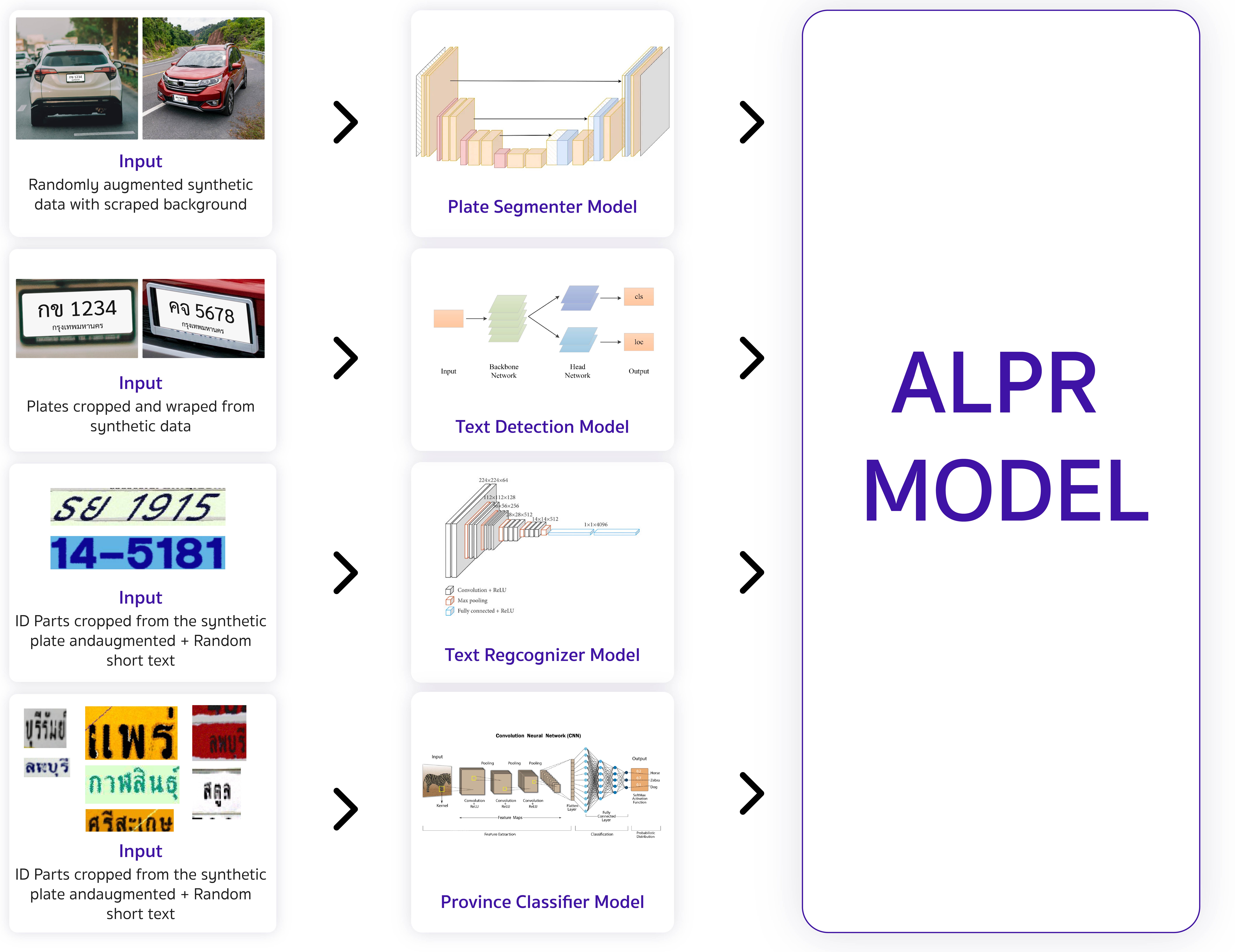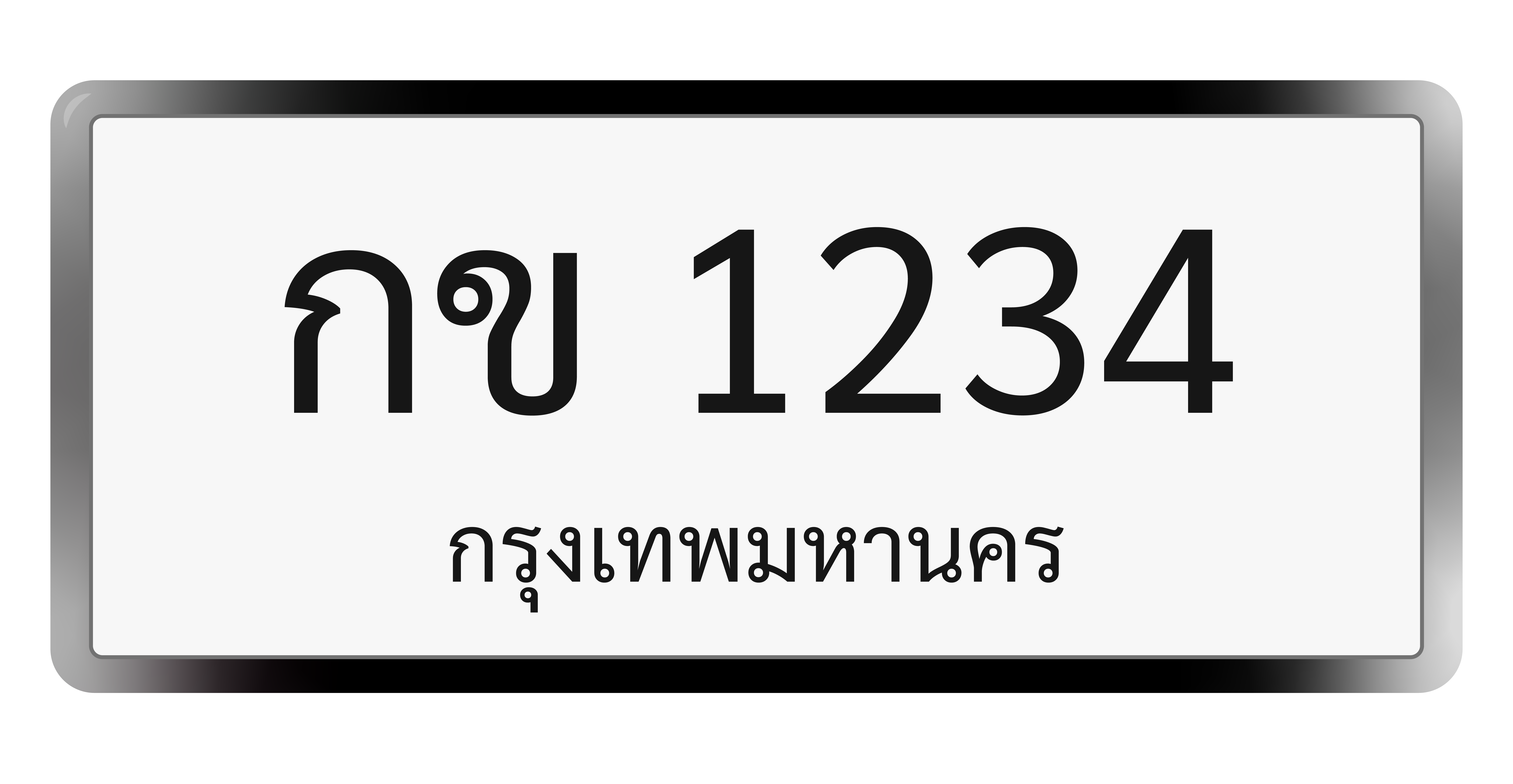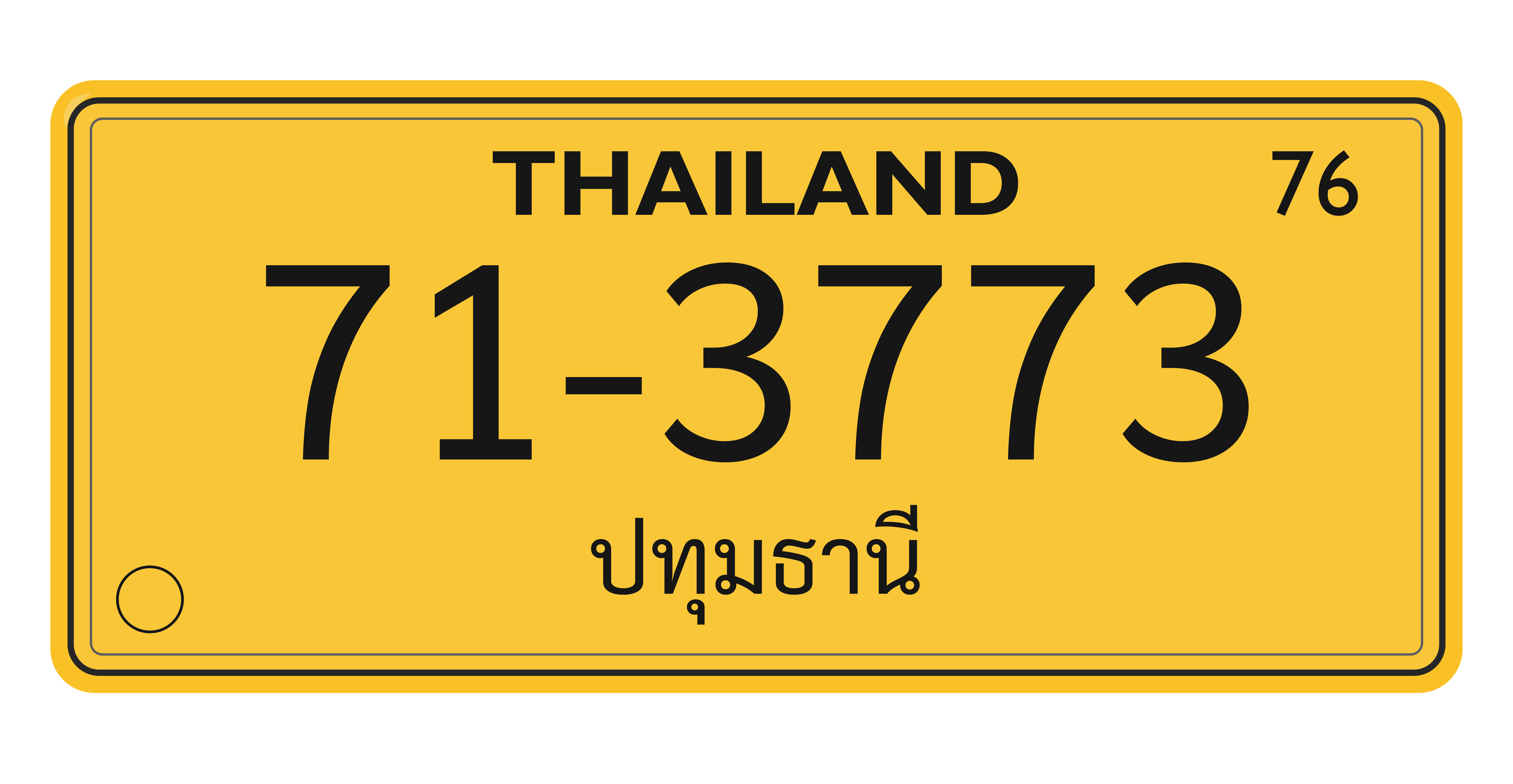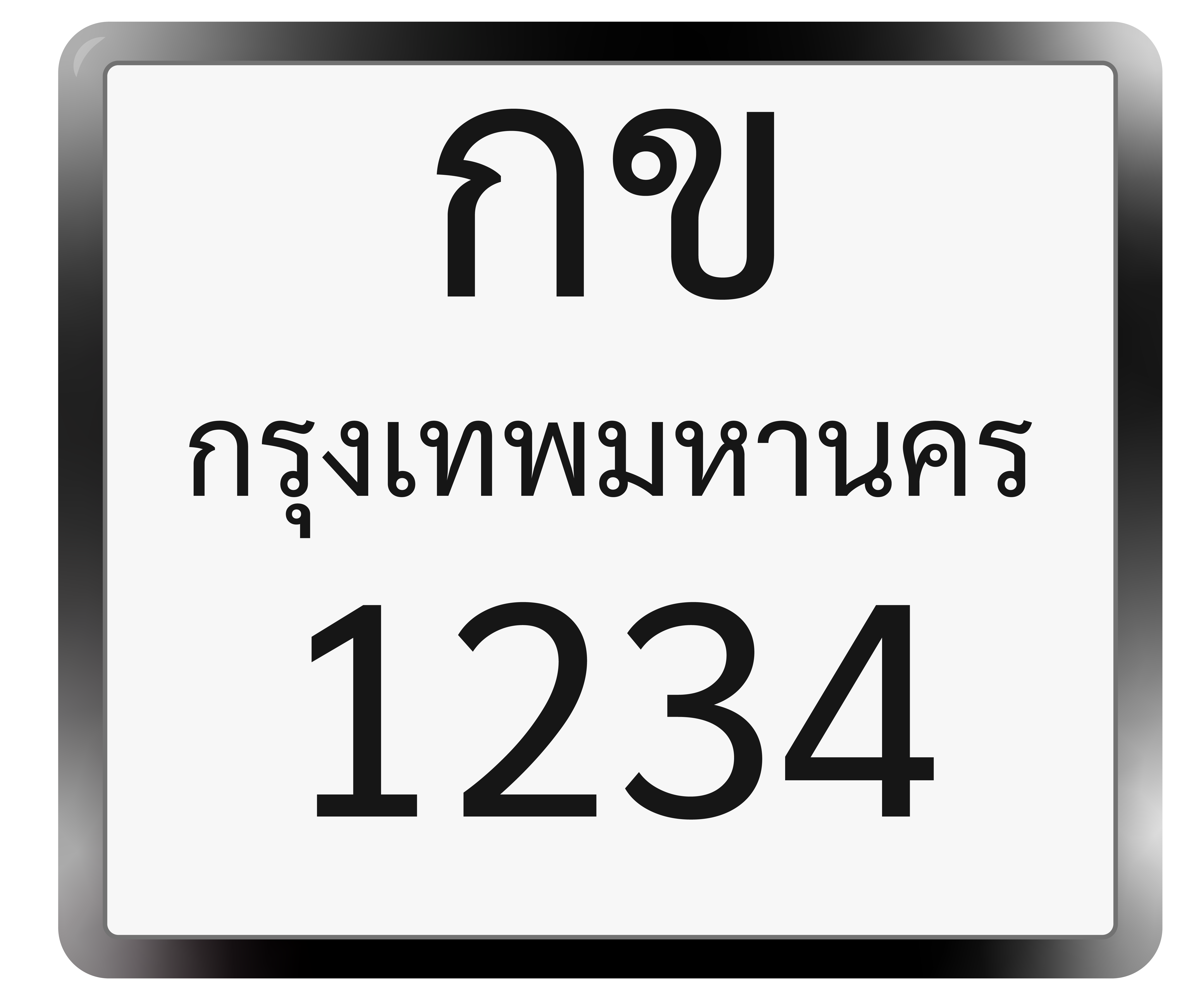¶ OCR License Plate
The AI reads images of license plate and converts them into text.
Beta version: The platform is in a development stage of the final version, which may be less stable than usual. The efficiency of platform access and usage might be limited. For example, the platform might crash, some features might not work properly, or some data might be lost.
¶ Training model

¶ Model
OCR License Plate model or Automatic License Plate Recognition (ALPR) consists of two parts: License Plate Segmenter and the OCR Engine. First, the input image is parsed through the License Plate Segmenter to segment any license plates found in the image. Then, each license plate is cropped before passing through the OCR engine which will extract the plate number and province and store in the JSON format.
- License Plate Segmenter: License Plate Segmenter segment the license plate found in the given image. Each segment would then go through a postprocessing method to be converted to a bounding box and front-facing license plate. In the postprocessing steps, the unlikely license plate segmented by the model will be discarded as well. The front-facing license plates obtained are then used in the next step as an input to extract relevant information.
- OCR Engine: ReceipThe OCR Engine part in ALPR intakes the front-facing license plate images as processed in the previous steps and extracts the relevant information of the license plate. Specifically, the engine detects the text on the image and determines whether they are the plate number or province. Then, it parses each text into an appropriate recognition model to extract the plate number and province of the plate. After the result, another postprocessing method is applied to weed out any unlikely license plate to ensure the quality of the result.
¶ Model Constraint
Although the system can read license plates in a clear and of decent quality images accurately, there are still some conditions that might negatively affect the performance of the model. In the case where the images are of low-quality or there exists in that image a small license plate that takes up very few percentages of the image, making it difficult to be read even by humans, there can be an error made by the system whether in the OCR part or the Segmenter part as well. Furthermore, in this version, the system is developed in the purpose to support only 4 types of license plate namely the normal type, the van-truck type, the no-province type , such as embassy plates or the plates of vehicle in government organizations which does not specify the province it is registered to, and the motorcycles type.
1. Normal Type

2. Van/Truck Type

3. No province Type

4. Motorcycles Type ( In our current version, the system is still unable to extract the province from old format of motorcycles plate in which the province is displayed as its abbreviation such as ‘กท’ for ‘กรุงเทพมหานคร’)

Other types of license plate are not considered in this system and the system might yield incorrect result if provided with input image containing other types of license plate.
¶ Model Evaluation
The model is evaluated in an end-to-end fashion. There are two main metrics used: Character Error Rate (CER) and Exact Match Accuracy. In CER, the result is evaluated against the ground truth in terms of the percentage of error by character while exact match accuracy only considers the prediction to be correct when the prediction is exactly the same as the ground truth
¶ Using Approach

¶ Input
The input image can be sent in a form of multi-part form data using the key name “files”. Here’s an example python snippet for requesting the API
import requests
def predict(url: str, img_path: str) -> dict:
files= [
('files', (os.path,basename(img_path), open(img_path, 'rb'), 'image/jpeg'))
]
response = requests.post(url, files,files)
return response.json()
¶ Tips on using the model
When using the OCR LPR model, we recommend integrators to check whether:
- The license plate in the picture is not too small or unreadable and the image is of decent quality.
- The type of license plate is within the model constraint.
If these conditions are applied, we can ensure that the model can perform best since it is within a desired environment for the model.
¶ Output
The output is a structured JSON containing 3 main parts. If there is more than one license plate in the image, the result would simply be appended to the list. The description of each field of a single license plate result are as follows:
- Coord: The bounding box of the license plate in the original image
- ID:
- transcription: The plate number of the license plate
- confidence: Confidence that the model has of this prediction ranging between 0 and 1
- Province:
- transcription: The province of the license plate (If there is no province, this will be an empty string)
- confidence: Confidence that the model has of this prediction ranging between 0 and 1
The example of output is shown below.
[
{
'coord': [[233, 647], [343, 647], [345, 729], [234, 733]],
'ID': {'transcription': '6กฬ4877', 'confidence': 0.9959618074467549},
'Province': {'transcription': 'กรุงเทพมหานคร','confidence': 0.9890705347061157}
}
]